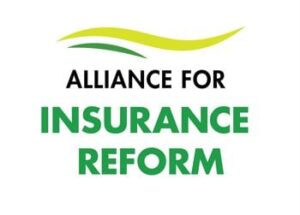There has been some welcome good news for businesses and community groups as new legislation amending occupiers liability has been passed into law as part of the Government Action Plan for Insurance Reform.
The law aims to rebalance the duty of care between occupiers such as businesses, community groups, sports clubs, recreational users, event organisers, visitors and trespassers.
These changes will largely reduce the burden on occupiers and raise the threshold on a finding of liability against an occupier. This means that there is no change if an occupier is negligent and injury occurs as a result.
The new legislation requires people coming onto another person’s property to exercise a reasonable degree of care for their own safety. The onus is on people to be responsible for their own actions first and foremost. It also restricts the circumstances in which trespassers may pursue a successful claim.
Up until now liability could only be waived by written agreement, but this new legislation expands the circumstances in which such liability can now be waived and there is a voluntary assumption of risk.
However, now the standard when liability is being considered is whether the occupier acted recklessly in relation to a hazard.
Below is a guide to what these changes will mean.
Duty of Care to Visitors
Under the old legislation, an occupier need only have reasonable knowledge of a hazard to be considered to have acted with reckless disregard for a visitor or consumer.
Under the new legislation, which amends the Occupiers Liability Act 1995 and other pieces of legislation, an occupier continues to owe a common duty of care to lawful visitors.
The new prescription sets out a non-exhaustive list of factors that will be taken into account when determining liability and whether an occupier met with the duty of care.
Some of these factors include:
- The probability of a danger on the premises.
- The probability of injury or damage to a visitor of a danger existing on the premises.
- The probable severity of an injury to a visitor that might result from a danger that exists on the premises.
- The practicability and the cost of precautions or preventative measures.
- Where applicable, the social utility of the activity or conduct which gives rise to the risk of injury or damage.
The above factors should provide clarity to the courts in assessing potential liability where an occupier faces a claim for breach of their duty of care.
Duty of Care to Recreational Users
Where there is a danger on the premises, an occupier continues to owe a duty of care to recreational users (and trespassers by the way) not to intentionally injure them or damage their property and not act with reckless disregard for their person or property.
Previously the test was whether an occupier acted with reckless disregard and knew or had reasonable grounds for believing there was a danger on the premises, the person or their property was or was likely to be on the premises, the person or their property was in or likely to be in the vicinity of the danger.
Now the test is whether the occupier knew or was reckless as to the three above factors. In effect this raises the threshold for a finding of liability against the occupier.
Duty to Recreational Users to Maintain a Structure in a Safe Condition
Where there is a structure on a premises, mainly used by recreational users, the occupier has to maintain the structure in a safe condition.
The new legislation sets out a non-exhaustive list of factors (which are the same as those for visitors outlined above) that will be taken into account when determining whether an occupier meets this duty.
Duty of Care to Trespassers
The circumstances in which a court can impose liability on the occupier for injury suffered by a person who entered onto the premises to commit an offence will be more limited under the new legislation.
Under the previous legislation where a person entered the premises for the purpose of committing an offence within the premises, the occupier was not liable unless the court determined otherwise in the “interests of justice”.
The new legislation now provides that an occupier will not be liable unless the court determines otherwise in “exceptional circumstances” having regard to matters such as the nature of the offence, the extent of the recklessness on the part of the occupier and the fact that the person was not a trespasser.
This also raises the threshold for a finding of liability.
Voluntary Assumption of Risk
The new legislation also allows for a broader range of scenarios where it can be shown that a visitor or customer has voluntarily assumed a risk resulting in harm.
The legislation provides statutory recognition of the defence of voluntary assumption of risk. This is an important element of the new legislation and should lead to reduced risk of claims and litigation faced by business owners, sports clubs and cultural organisations, community groups and event organisers, charities, voluntary groups and the State.
Now an occupier does not owe any duty to a visitor or recreational user in respect of risks willingly accepted by them where they are capable of comprehending the nature and extent of those risks. A visitor or recreational user may accept the risk by their words or conduct. It is not required to evidence the communication or interactions with the occupier.
The new legislation states that liability will not be apportioned (e.g., contributory negligence) in respect of a finding that a visitor or recreational user willingly accepted a risk. So, if a court makes such a finding an occupier will have no liability.
What happens now?
The new legislation has been in effect as of July 30th of this year. Any existing cases will be dealt with under the old regime, and it will take time before cases will come before the courts under the revised legislation.
If the legislation is implemented as intended, then it stands to reason that insurance premiums should be reduced. It is possible that the number of minor slips, trips and falls going through the courts will also be reduced.
If the risk of being sued and the frequency of such claims is reduced, then the premiums should reflect this. It is important to note that not every accident is somebody’s fault requiring compensation.
The ball is now in the court of the insurance companies to reduce premiums.
To support this and push for change, the Alliance for Insurance Reform is launching a campaign targeting unjustifiable claims and the harm that they cause called Enough is Enough.
Useful information on the above topics can be found at the following links:
Action Plan for Insurance Reform: December 2020 (www.gov.ie)
New measures may reduce injury claims, insurance costs (rte.ie)
Alliance For Insurance Reform (@InsuranceRefIre) / X (twitter.com)
Courts and Civil Law (Miscellaneous Provisions) Act 2023 (irishstatutebook.ie)









